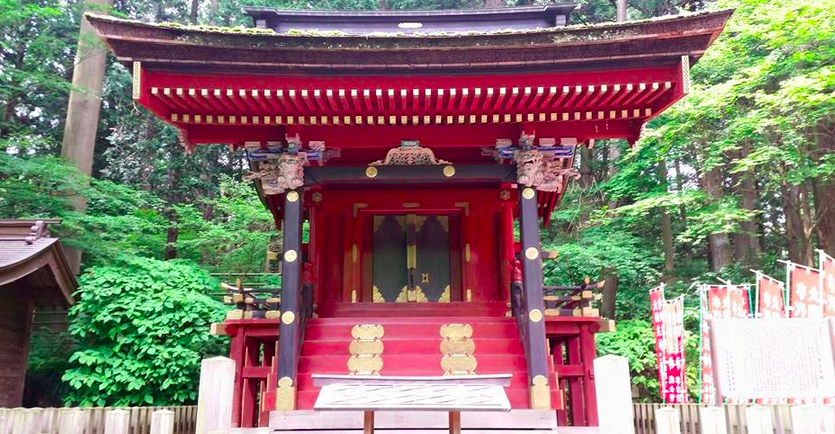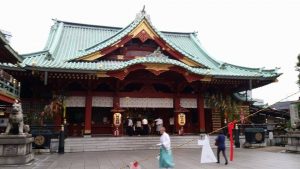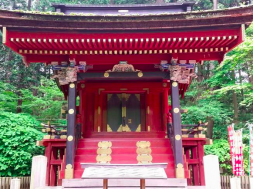

It’s easy to think about Japan and imagine the bold and brash imagery that comes packaged with its pop culture. It’s true, Japan has a pop-culture-pulse like nowhere else on Earth, and it’s easy to get completely swept up and lost in the endless energy of Harajuku, Akihabara and Shibuya without ever looking back.
To do so would, however, be to miss out on what many visitors have come to refer to as the real Japan. I don’t like that terminology, seeming to imply that anything built after Japan’s Americanisation is some kind of ephemeral mirage, but I understand what they’re getting at. Rome wasn’t built in a day, and Japan certainly wasn’t built by the Akiba Geeks or the Harajuku Fashionistas, even if they’ve since come to represent it. The country has a rich history of religious structures, temples and shrines that draw just as many visitors, both native and foreign, such as the Shibuya Crossing or the Ikebukuro Pokémon Centre.
 If you’ve never been to Japan, chances are your image of these shrines is something like Fuji-Sengen Shrine, at the foot of Mt. Fuji in Yamanashi. A cluster of incredibly ornate and elaborate structures housed inside its very own private section of lush forestry, going through the gate really feels like entering another world, one perhaps populated only by tourists and monolithic trees. It’s truly beautiful, the type of place you could easily lose hours of your day just existing in.
If you’ve never been to Japan, chances are your image of these shrines is something like Fuji-Sengen Shrine, at the foot of Mt. Fuji in Yamanashi. A cluster of incredibly ornate and elaborate structures housed inside its very own private section of lush forestry, going through the gate really feels like entering another world, one perhaps populated only by tourists and monolithic trees. It’s truly beautiful, the type of place you could easily lose hours of your day just existing in.
Fuji-Sengen’s solitude is kind of unusual though. Most of Tokyo’s shrines are usually hidden secrets; gateways into Japan’s illustrious past, nestled between the colourful, cutting-edge corridors of its present. Meiji-Jingu shrine, for example, sits directly across the road from Omotesando and Takeshita Dori, Harajuku’s bustling epicenters.
Akihabara too has its own hidden gem in the form of Kanda-Myojin, a be autiful, if slightly more condensed shrine just a stone’s throw from the infamous Akiba strip. Kanda-Myojin was recently made famous by appearing as a key location in Love Live!, which is, as I might have mentioned before, the biggest thing ever right now, and was even the venue for a Love Live! themed event just last year. If the idea of a pop-geek-event like this taking place in an ostensibly religious area takes you by surprise, you’re certainly not the only one, but it stands as a pretty solid example of Japan’s dual identity.
autiful, if slightly more condensed shrine just a stone’s throw from the infamous Akiba strip. Kanda-Myojin was recently made famous by appearing as a key location in Love Live!, which is, as I might have mentioned before, the biggest thing ever right now, and was even the venue for a Love Live! themed event just last year. If the idea of a pop-geek-event like this taking place in an ostensibly religious area takes you by surprise, you’re certainly not the only one, but it stands as a pretty solid example of Japan’s dual identity.
Japan’s oldest temple sits at the foot of Tokyo Tower, and this sums up Japan perfectly. This is a country that doesn’t believe in past, present or future. They acknowledge, publicly and structurally, that all three are inexorably connected. The future is already here and the present will be the past by the time you finish this sentence. Japan may seem like a futuristic, forward thinking place (and in many ways, it is) but it never neglects what came before. Instead, it likes to push it all together and let it all exist at once. The real Japan isn’t Fuji-Sengen or Senso-Ji, and it isn’t Akihabara or Shinjuku either. The real Japan is Japan. All of it. At the same time.










